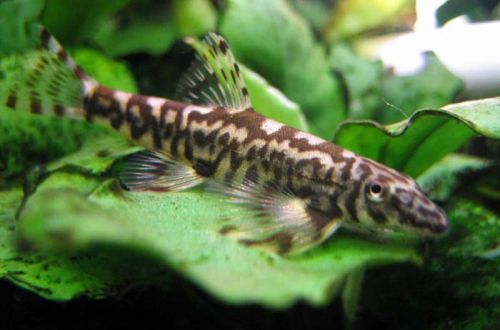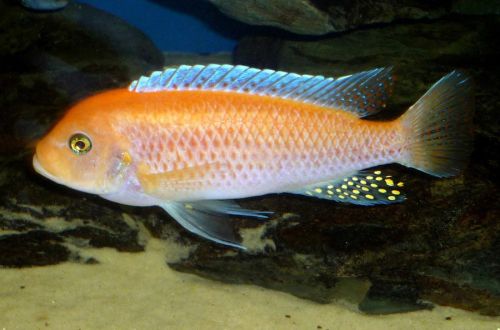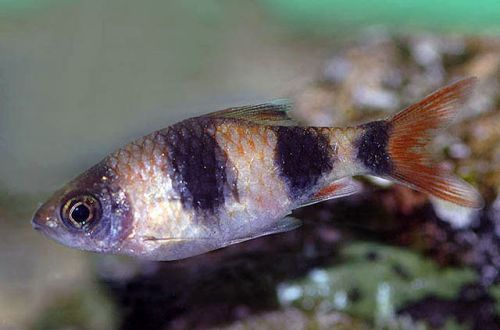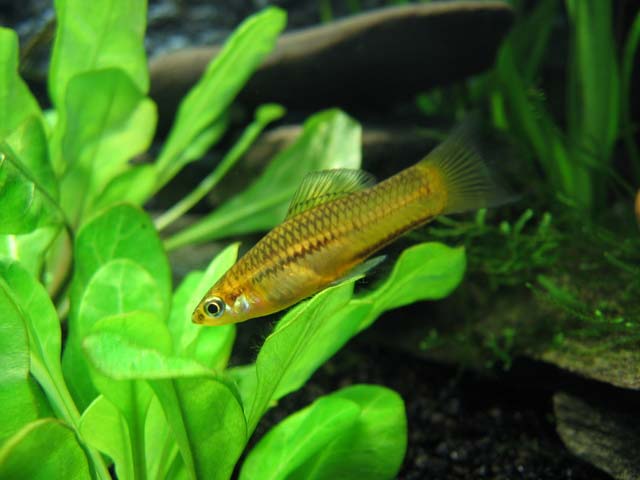
Pygmy swordsman
The pygmy swordsman (dwarf), scientific name Xiphophorus pygmaeus, belongs to the Poeciliidae family. The word “pygmy” in the name is a household name and indicates the miniature size of this fish. She really is the smallest member of the Swordsmen group.

Contents
Habitat
It comes from the eastern regions of Mexico. Inhabits the vast basin of the Panuco River, which carries its waters to the Gulf of Mexico. Prefers regions with a fast, sometimes violent current. Only in dry periods, the Pygmy Swordsman can be seen along with other members of the genus in stagnant reservoirs.
Brief information:
- The volume of the aquarium – from 80 liters.
- Temperature – 24-28°C
- Value pH — 7.0–8.0
- Water hardness – soft to medium hard (5-18 dGH)
- Substrate type – any
- Lighting – moderate or bright
- Brackish water – yes, at a concentration of 5-10 grams of salt per 1 liter of water
- Water movement – moderate
- The size of the fish is 3–4 cm.
- Food – any food
- Temperament – peaceful
- Content alone, in pairs or in a group
Description
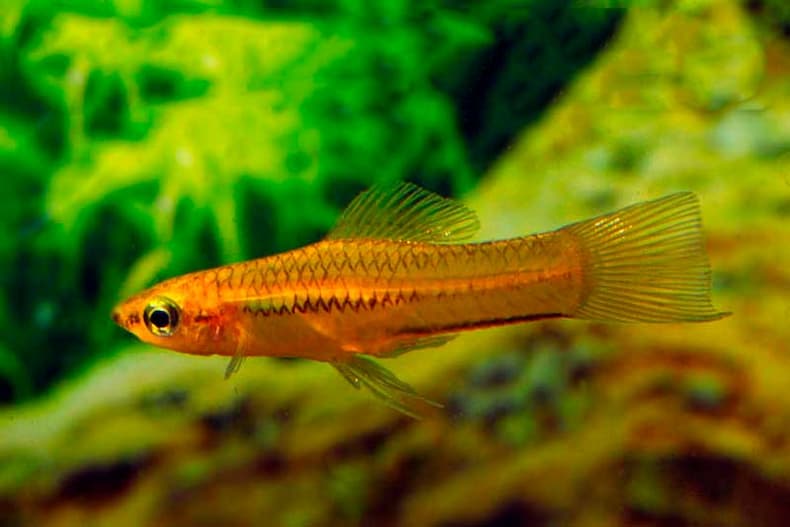
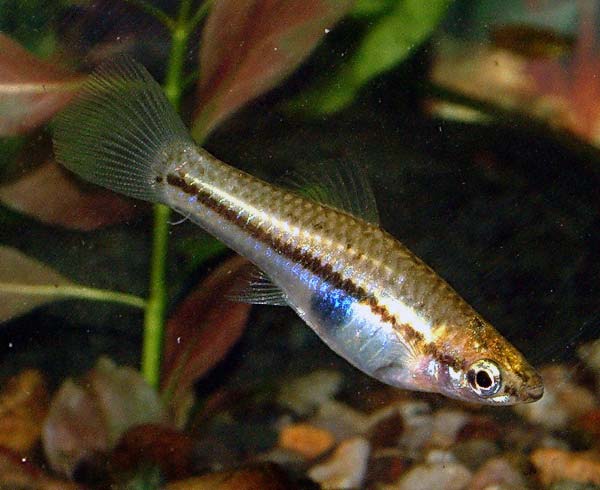
The name is fully consistent with the description. Adult individuals reach a length of about 3.5 cm. Males look more elegant than females and have a characteristic “sword” in the form of slightly elongated lower rays of the caudal fin. The coloration of males with a yellow tinge, in females is silver with a black stripe stretching from head to tail.
Food
Will accept all types of dry, frozen and live foods of suitable size. The basis of the daily diet can be high-quality flakes, granules with the addition of small bloodworms, brine shrimp, daphnia and similar products.
Maintenance and care, arrangement of the aquarium
Despite the modest size of the Pygmy Swordsman, it is desirable to keep in large aquariums with enhanced filtration and moderate water movement, imitating the rapid flow of the river. In the design, it is desirable to provide places for shelters, for example, in the form of thickets of unpretentious plants.
Being native to flowing waters, this species is sensitive to the accumulation of organic waste (food residues, excrement). It is important to ensure high water quality. Regular maintenance of the aquarium, such as cleaning the soil, decorating elements and replacing part of the water with fresh water, is of key importance.
It is acceptable to be in brackish water with a salt concentration of 5–10 gm per liter.
Behavior and Compatibility
Peaceful active fish. They pair well with other species of comparable size and temperament. Males compete with each other for dominance in the group and the attention of females, so in small aquariums it is worth keeping one male in the company of several females.
Breeding / breeding
Considered easy to breed. The appearance of fry is very likely if the Swordtails are kept in a suitable environment and receive a balanced diet. Fertilization, like in other viviparous species, occurs inside the body of the female. The incubation period is approximately 4-6 weeks. The fry appear fully formed and within an hour after birth they begin to search for food. In the first days and months, they are too small and may become a victim of predation by other fish. For the safety of the offspring, it should be transplanted into a separate tank with identical water conditions. In addition, it will greatly facilitate feeding.
Fish diseases
The likelihood of the disease increases when the fish are kept in an unsuitable environment, poor nutrition and injury. Under normal conditions, cases of the disease are rare. Read more about symptoms and treatments in the Aquarium Fish Diseases section.



